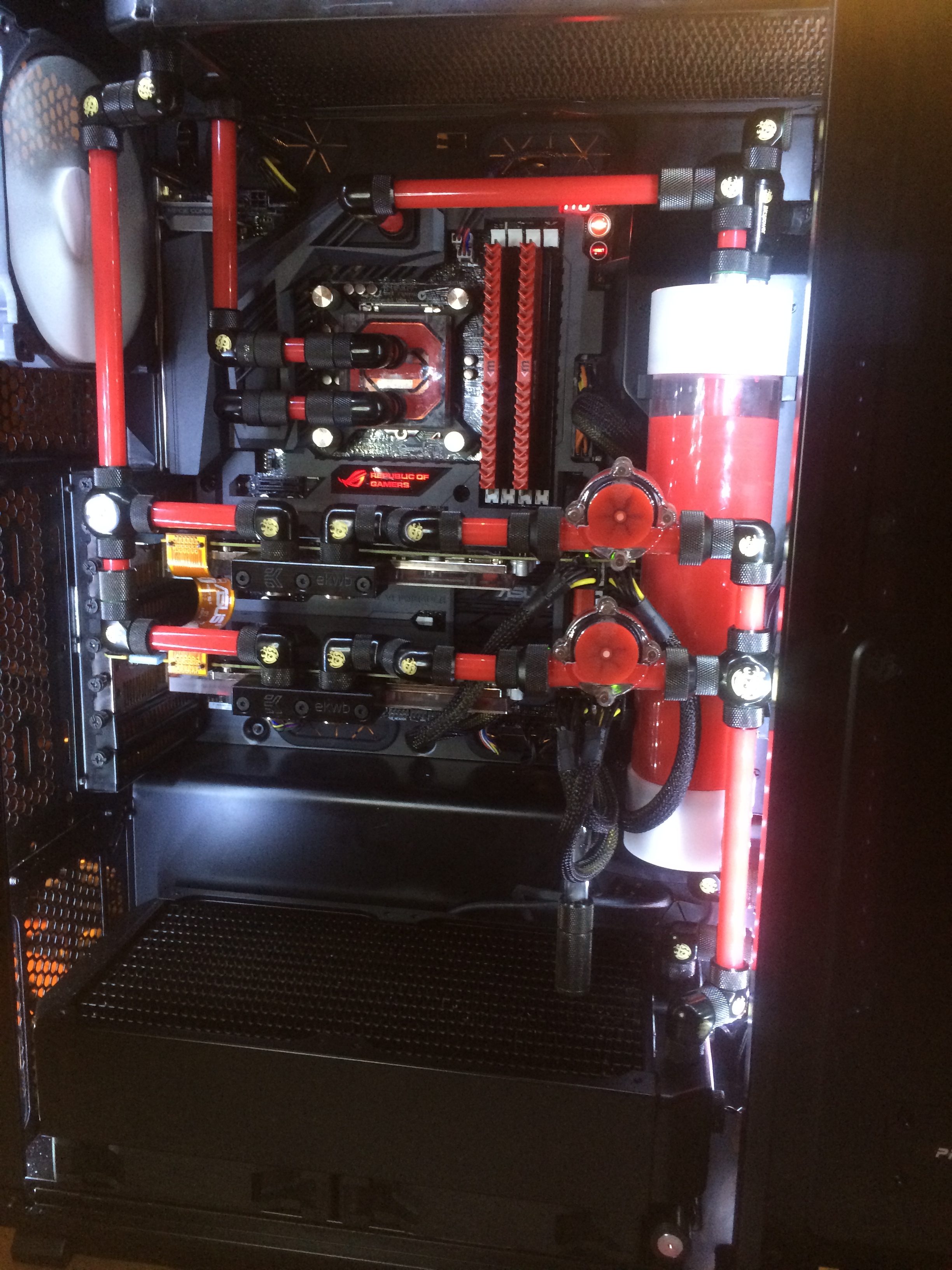Oh no argument there .... still it makes me doubt their direction. The 670 DCII TOP was the greatest card evah IMO.....techpowerup gave it the only 10.0 ever. But their 7xx series has been disappointing. I shook my head every time someone wanted me to build with EVGA SC series and I found it burdensome to always have to repeat the same web searches showing VRM failures on the EVGA 570s ... why was EVGA the only one of the big 4 who didn't use a custom PCB w/ beefed up VRMs.
But now w/ nVidia having put both physical and legal barriers as to what 3rd paty vendors can do with voltages, the logic of a custom PCB is harder to justify. The original MSI 780 was a 2nd place finisher in most tests to Asus but the new MSI 780 kicks tail. I use the Asus 780 in WC builds and the MSI 780 in AC builds cause the MSI is much quieter.
In my own box, I have the twin 780s down from my original OC as my son (he's a pilot) likes to play Flight Sims and BF4 on my box after I'm snorin' .... BF4 manages to crash the GFX driver when nothing else does.... so I have about a 26% OC on the core and 21 % on the memory. The run about 44c under Furmark and 39C if i turn the rad fans to max..... I was lucky .... both my 780s have Samsung memory.
But the thing is, MSI has managed to compete here with a quieter card using a reference PCB. Now it has to be mentioned that this is not the old nVidia PCB .,... it's a bit beefier with better VRM and unless ya play little tricks like thy do with the Classy and Lightning, we are not seeing better overclocks than the reference boards.
It just seems to me that "they are resting on their laurels" a bit. And while they still rule the MoBo segment at $250 and up, I can't make a recommendation for an Asus board under $225 ..... their boards are comparable to the competition and they do have the best BIOS IMO, but I am not gonna pay $545 for a Z97 Hero w/ 4790k when I can get the Z97 GD65 w/ the 4790k for $465.
They have also had some quality problems .... RMAs are up in recent years .... the Z87 boards are still dealing with the BIOS Clock Freeze Bug which is now showing up in Z97 boards too. Things used to easy .... for over 10 years I bought nothing but Asus MoBos, Asus GFX cards and Asus Opticals .... after reading all the tests and reviews, always felt that I was getting the best product for the money .
Now when I read reviews like this where the MSI 780 Ti gets a 9.9 rating (2nd only to the aforementioned 670 TOP), and the Asus gets the lowest rating (9.4) ya just gotta wonder what direction the company is going....especially after a year wrestling with the BIOS Clock Freeze bug ... two fixes announces, latter being a new BIOS (announced June 11) that Asus never actually released as described and will not address whether the BIOSs released since fix the problem or even acknowledge that there was a BIOS fix.
But straying way off topic

... the card is damn pretty, the small size is great and with the EK block it will render the poorly performing hydrocopper irrelevant. Hopefully we'll see an 880 like this. Just wish they had the confidence to turn heads and make it look like they making performance and leading the pack a priority.

 ... the card is damn pretty, the small size is great and with the EK block it will render the poorly performing hydrocopper irrelevant. Hopefully we'll see an 880 like this. Just wish they had the confidence to turn heads and make it look like they making performance and leading the pack a priority.
... the card is damn pretty, the small size is great and with the EK block it will render the poorly performing hydrocopper irrelevant. Hopefully we'll see an 880 like this. Just wish they had the confidence to turn heads and make it look like they making performance and leading the pack a priority.











